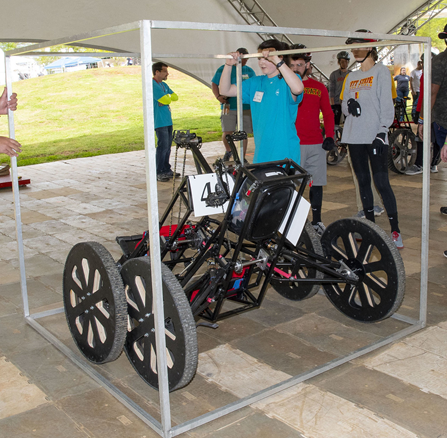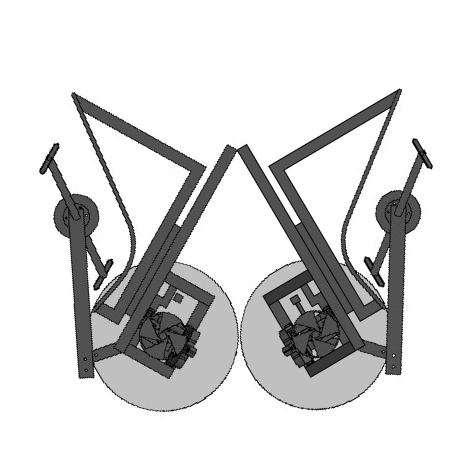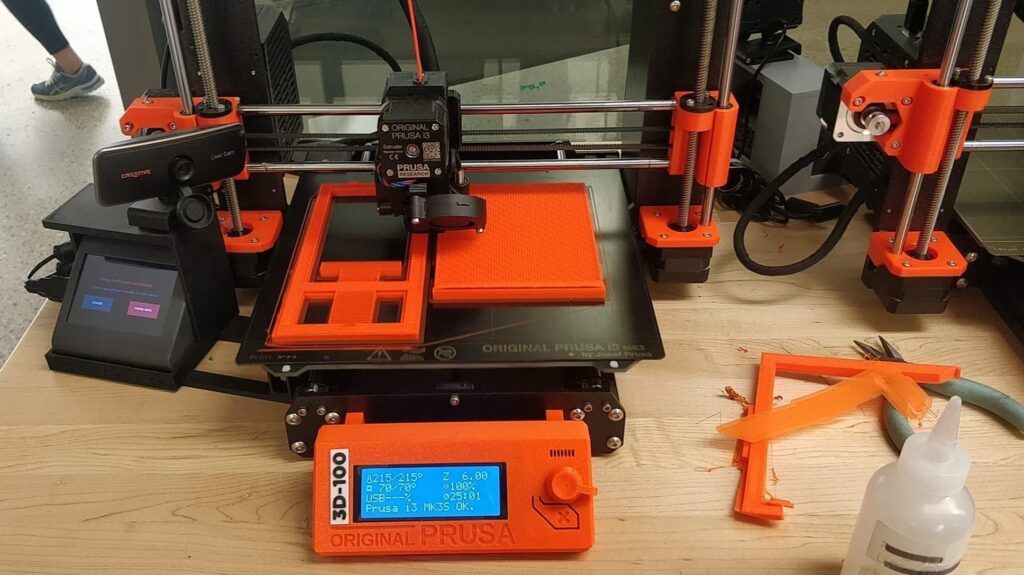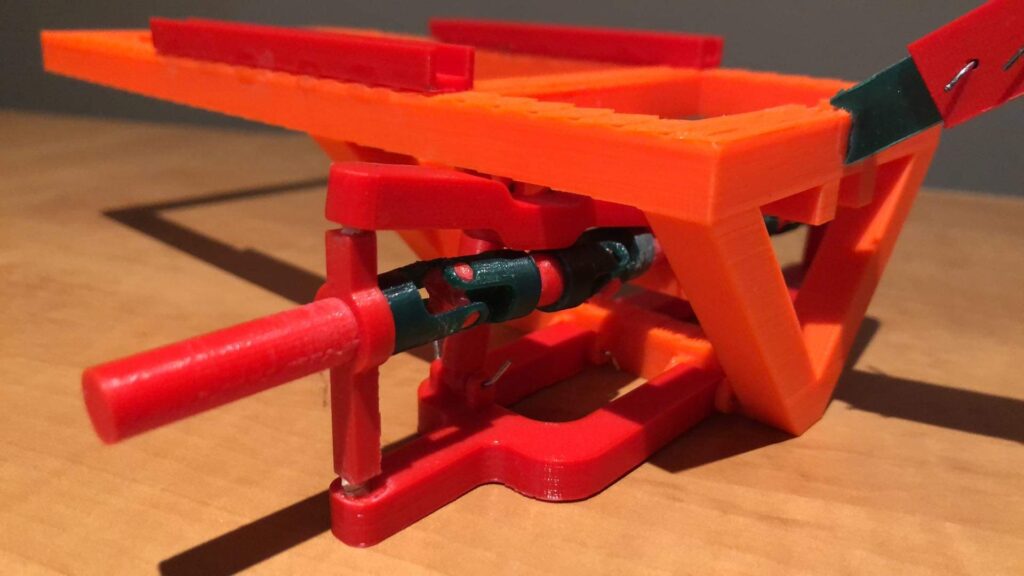Project Category: Mechanical

Welcome to our Capstone Design website.
Join us in person at the University Campus design fair presentation on April 5th, 2022 for our presentation.
About our project
In space exploration, a rover is a machine used by NASA for the exploration of extra-terrestrial land surfaces, namely lunar and Martian. NASA exploration rovers, such as the Opportunity, Curiosity and the Perseverance, are powered through an energy reserve. NASA’s Human Exploration Rover Challenge (HERC) aims to test student designed and built human powered rovers on their simulated non-terrestrial obstacle course. The team designed a rover that satisfied all NASA and capstone project conditions and deliverables. While NASA’s annual challenge application deadline closed prior to the formation of the capstone team, the team is currently going through the process of forming a university club with the aim of competing at the NASA facility in 2023.
The rover was designed with different aspects of extraterrestrial travel in mind, be it lunar or Martian, even though the rover will compete in Earth’s atmospheric conditions. The team wanted to incorporate these challenges into the design, from it’s portability and storability, to the difference in the way lubrication functions in joints, to how a space-suit wearer might utilize the vehicle.
Meet our team members



Carol is a fifth-year student with a background in mechanical engineering design and analytical software as well as an interest in biomechanics and robotics.
David is a mature student with work experience in oil & gas, heavy machinery operation and two engineering internship terms.
Hasan is a fourth year student with experience in numerical approximation and analysis software as well as hands-on experience from on-field construction jobs.



Jacqueline is a fifth-year mechanical engineering student that will be graduating from Schulich in April 2022. She enjoys 3D modelling and solid mechanics, and is excited for her next challenge after graduating in April.
Jacques is a fifth year mechanical engineering student. He has experience working in the oil and gas industry and is excited to be participating in designing a rover for a NASA competition.
Josh is a fifth year mechanical engineering student expecting to graduate in spring. He has a background in data analysis and research from his two spells on internships.
Details about our design
How is the rover suspension designed to successfully traverse extraterrestrial craters and slopes?

Two important obstacles that the rover must traverse at the NASA extraterrestrial-mimicked terrain is large craters and slopes. This requires a suspension system that can incorporate simultaneous turning, meaning the inclusion of a universal joint was required. Additionally, the coilover positioning was identified as a design opportunity. By building the design around the idea of minimizing the change of angle of the coilover throughout it’s range of motion, we were able to maximize our suspension capabilities.
Dynamic Analysis of the Suspension

The suspension system of this rover required a complex analysis in order to understand how it would react to different terrain. A force analysis was completed on the rover and a transfer function was found relating the displacement of the chassis to the input of the system, which is derived from the terrain that the rover is traversing. The Bode diagram shown on the left is a representation of the magnitude of the system with respect to the input frequency (which is related to the velocity of the rover). It was found that the natural frequency of the system is 54.1 rad/s.
How is the rover design affected by the shipping requirements?
The NASA HERC competition rules specify a maximum overall volume that the rover has to remain within in order to be shipped to the competition. To do this, the team noted that a long rover would not inherently fit within this volume constraint so therefore a solution would be to fold the rover in half widthwise. This would maximize the volume and length capabilities of the rover. Implicitly, this meant that the two halves of the drivetrain were disconnected, and would thus have to be powered by two separate drivetrains for simplicity. Additionally, it had to be considered that the rover must be task ready from it’s storage position within 2 minutes.


Left: Volume constraint verification for competition at the NASA HERC in Houston.
Right: SolidWorks rendering of the folded rover
How does the chassis shape minimize the stress?

In our initial design, a large portion of elements were inefficient in distributing internal stresses due to loading primarily in the chassis beams that run under the suspension. It was determined that the width of the chassis was contributing to the additional load and a redesign was carried out. As can be seen in the figure, a new Von Mises static stress analysis was performed which justified the redesign. The highest area of stress occurs at the intersection between the suspension pin and the chassis frame.
Partners and mentors
We would like to extend our thanks and gratitude to the University staff members who have helped us; Dr. Qiao Sun, Dr. Alex Ramirez and Dr. Phillip Egberts and Tom Mathias.
Our photo gallery
First Prototype: 3D Printed Parts






The team 3D printed the first prototype as a proof of concept at the Maker Space in the University of Calgary engineering department.
Purchased Parts





Interested in this project?
The NASA Human Exploration Rover capstone team has started a club!
The Space Exploration Rover Club (SERC) aims to continue the work of this capstone design and compete at the NASA Houston facility in 2023. If you’re interested in finding out more about this, click here.
References
- https://www.nasa.gov/sites/default/files/atoms/files/2022_herc_fnl_mh5.pdf
